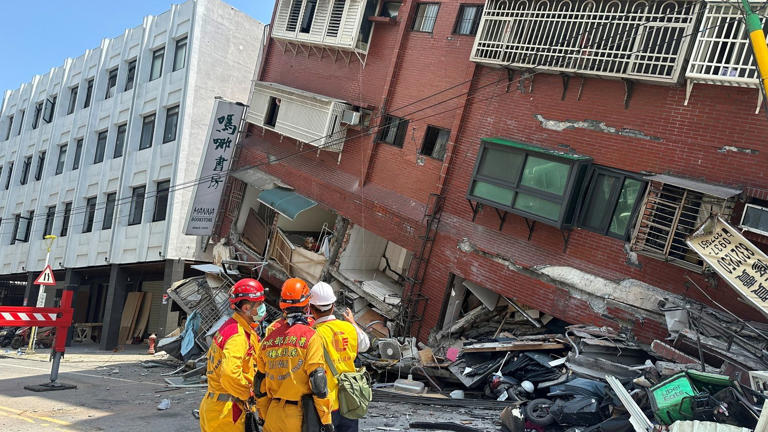Air India Flight AI171 Crash Investigation moves forward as black box data is successfully recovered and analyzed. Investigators now hope to uncover the cause behind the tragic crash.

© Getty
Air India Flight AI171 Crash Investigation: Black Box Data Recovered in Major Breakthrough
The Air India Flight AI171 crash investigation has taken a major step forward. Authorities have successfully recovered and downloaded data from the plane’s black boxes. This development brings fresh hope that investigators can finally understand what caused the disaster on June 12, which claimed at least 274 lives.
Just 36 seconds after takeoff from Mumbai, the Boeing 787-8 Dreamliner plummeted into a residential hostel, leading to one of the worst aviation tragedies in recent Indian history. Among the dead were 240 people on board and dozens of bystanders on the ground.
Black Boxes Found and Data Retrieved
As part of the Air India Flight AI171 crash investigation, both the Flight Data Recorder (FDR) and the Cockpit Voice Recorder (CVR) were located several days after the crash. One was found on the rooftop of the hostel into which the plane had crashed. The other was recovered from the wreckage of the aircraft fuselage.
There were initial concerns that the devices were too damaged to be useful. But in a major breakthrough, the Aircraft Accident Investigation Bureau (AAIB) announced that the crucial memory modules inside both boxes were intact. Investigators were able to extract and download the data, which now forms a critical part of the ongoing Air India Flight AI171 crash investigation.
What the Black Boxes Will Reveal
The Air India Flight AI171 crash investigation will now rely heavily on what the black boxes can tell us. The CVR (Cockpit Voice Recorder) captures audio from inside the cockpit, including crew conversations, alarms, and communication with air traffic control. This will give insight into how the pilots reacted during the final moments.
The FDR (Flight Data Recorder), on the other hand, logs technical data like altitude, speed, engine performance, and flight control inputs. Together, this information will help experts recreate the final 36 seconds of the doomed flight and look for signs of mechanical failure or human error.
According to the AAIB, all data was downloaded at its Delhi laboratory within a day of receiving the boxes.
Possible Mechanical Failure Suspected
The Air India Flight AI171 crash investigation is focusing on several possible causes, with engine failure being one of the top theories. Before the crash, the flight’s captain, identified as Captain Sabharwal, issued a mayday call stating a sudden loss of power and thrust.
Adding to this suspicion, footage from the crash site showed that the plane had deployed its Ram Air Turbine (RAT). This is an emergency system that activates when an aircraft loses main power, usually due to both engines failing or a complete hydraulic or electrical failure.
While no final conclusion has been reached yet, this new data could confirm whether a dual engine failure occurred or if other system-wide malfunctions played a role.
Recent Maintenance Under Review
Another important angle in the Air India Flight AI171 crash investigation is the aircraft’s recent maintenance history. According to Air India, the plane had passed all regular safety checks. The right engine was replaced less than four months before the crash, and the left engine had undergone inspection in April.
Despite this, investigators and aviation safety experts are reviewing the maintenance records in detail. If a mechanical fault is found, the role of maintenance and inspections will be closely examined to determine whether any warning signs were missed.
Government and Boeing to Face Questions
As the Air India Flight AI171 crash investigation moves into a deeper phase, the Indian government is planning to convene a parliamentary committee. This group will assess not just the crash itself, but wider safety concerns in India’s civil aviation sector.
Sources report that officials from the government, Air India, and Boeing have been summoned to appear before the committee. They are expected to answer questions about aircraft safety standards, maintenance protocols, and how a modern aircraft like the Boeing 787 could suffer such a catastrophic failure so quickly after takeoff.
This committee could play a key role in shaping future aviation safety regulations in India.
Victims’ Families Await Answers
As the Air India Flight AI171 crash investigation continues, the families of those who died are still waiting for answers. Many have expressed frustration over the pace of the investigation and the lack of public information released in the early days.
Now, with the successful recovery of the black box data, there is renewed hope that the truth will soon emerge. Investigators will be working to determine whether the tragedy was caused by technical faults, human error, or a combination of both.
Rebuilding Trust in Air Safety
The outcome of the Air India Flight AI171 crash investigation will have long-term consequences. Not only will it help bring closure to grieving families, but it may also trigger changes in how aircraft are maintained, monitored, and operated across India’s airlines.
Lessons learned from this tragic event will likely lead to tighter safety rules, better training, and possibly even design reviews for the Boeing 787 fleet.
Conclusion
Now, investigators have the tools to reconstruct the flight’s final moments and uncover what went wrong. As the analysis unfolds, authorities hope to use the findings not only to explain the disaster but to improve air safety for everyone in the future.
The world is watching closely, and the families of 274 victims deserve nothing less than the full truth.
Related:
Putin War Preparations NATO Threat: 7 Alarming Signs of Escalation